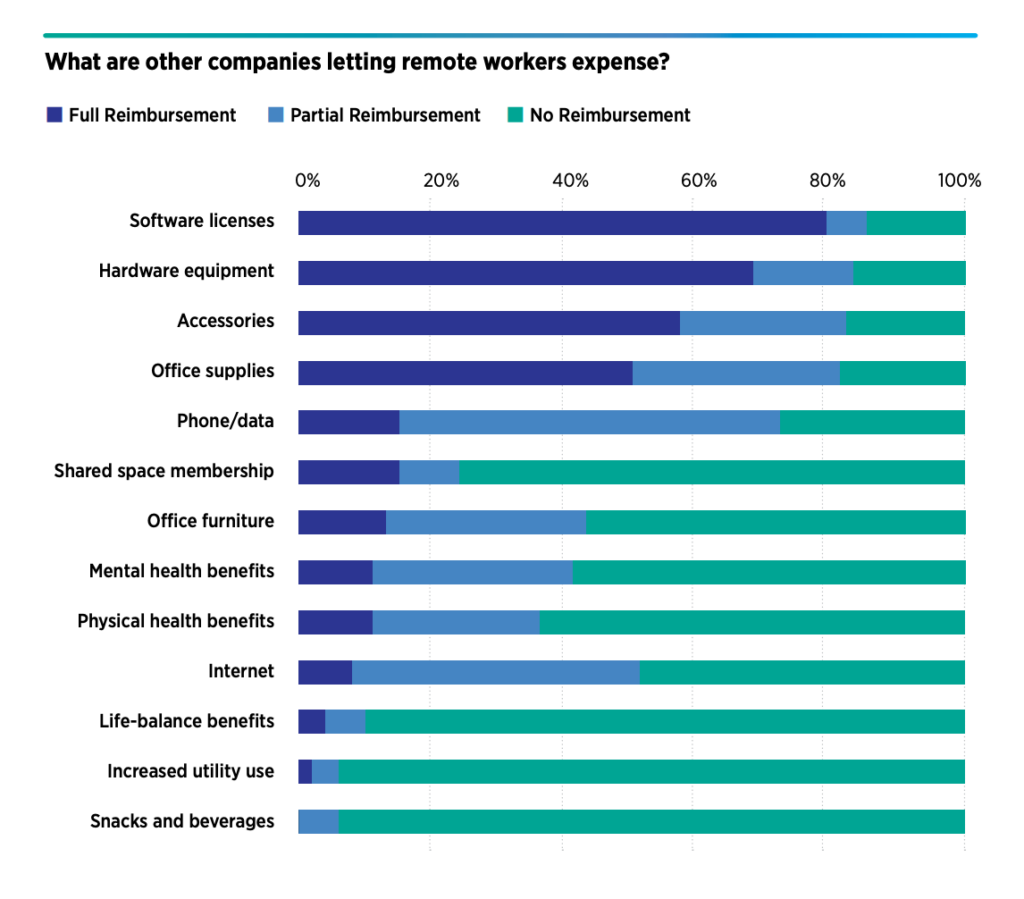What Are the Most Popular Remote Employee Expenses?
Research from Global Workplace Analytics says a typical U.S. employer is realizing cost savings—to the tune of $11,000 per remote worker each year—by scaling back their physical footprint. Companies that want to remain competitive in the talent marketplace are taking a small percent of those savings and redistributing them to employees as benefits. Here are the most common remote employee expenses according to our survey with Chief Executive Group.
>> Related: Remote Workforce Expense Policy Gaps Leave Employees Adrift <<
What are your competitors allowing their remote employees to expense?

According to our survey, software licenses top the list of remote employee expenses. Not far behind is hardware equipment (83%), office supplies and accessories (81%), and phone and data usage (72%).
Yet, our survey found that only 51% provide financial support for the internet connectivity workers need to accomplish their work. “Every remote employee, every single month, is getting a bill for their internet,” said Connor Lawrence, Director of Customer Success at TravelBank. “But only half of companies represented in the survey reported reimbursing staff for that expense.”
For now, what the data shows is that companies only reimburse a fraction of the cost of remote work, focusing on the actual employee spend rather than on the overall experience and culture as a strategy to retain talent.
>> Related: How to Adapt to the Surge of Expenses from Amazon, Walmart & Target <<
Interestingly, the practice of reimbursing employees for expenses incurred as a result of working remotely, even part of the time, appears to be more prevalent at smaller companies. The same is true when looking at mental health, physical health and work-life balance benefits—most likely as a way to compete with larger peers who may be able to offer higher compensation levels and more robust health care packages that may cover benefits like gym membership.
For instance, 35% of companies with less than $25 million in annual revenues reported fully or partially reimbursing shared space membership/usage, versus none of the larger companies over $100 million in revenues. Even office furniture tipped the scales, with 65% of small companies offering reimbursement to employees, versus 30% of large companies.
Differentiate your company with remote perks
Overlooking these benefits is a missed opportunity to differentiate yourself beyond the usual incentives competitors offer, particularly in larger metropolitan hubs where in-office perks were common before the pandemic. “If you’re trying to attract the type of skilled employees who used to be courted by places like Google or LinkedIn or Meta, where they had laundry service and endless snacks, there is a ton of pressure to replicate those competitive perks at home, in a remote workplace,” Lawrence said.
Beyond those common expenses, companies have an opportunity to customize expensable items to meet their business goals, whether that is to optimize costs, maximize productivity, retain talent or build on company culture.



